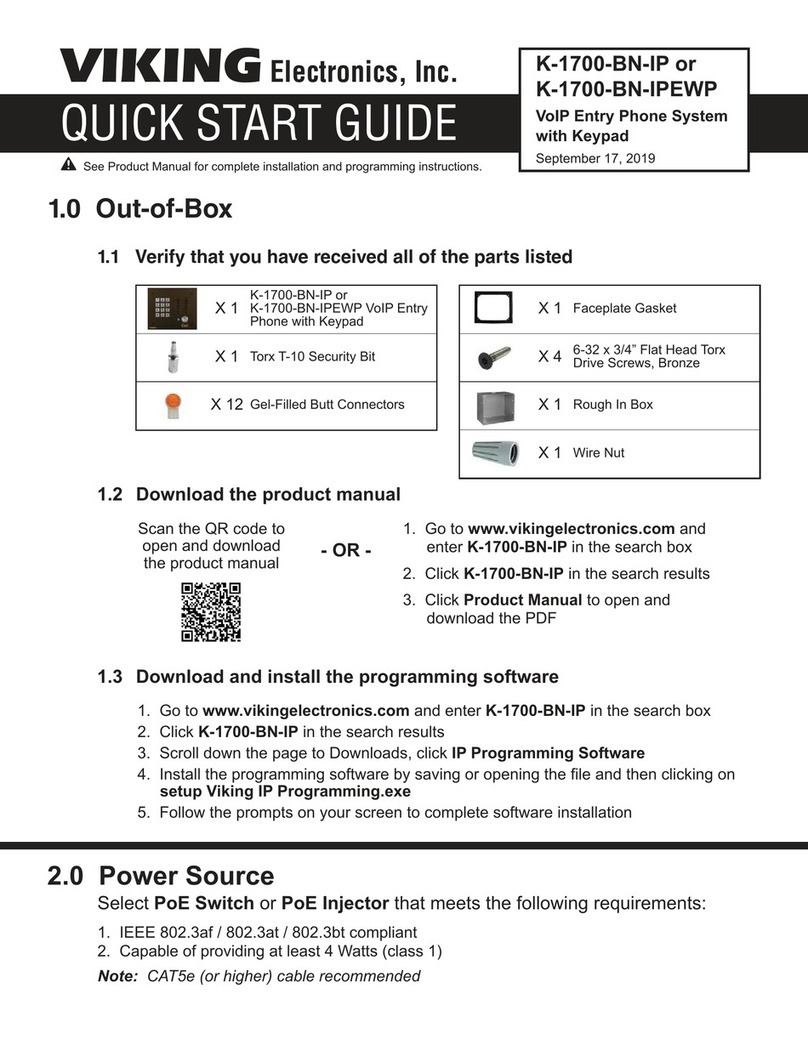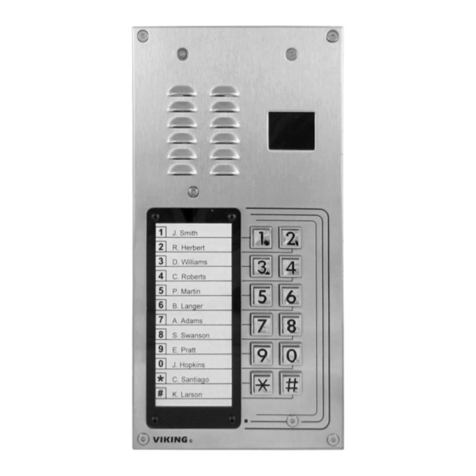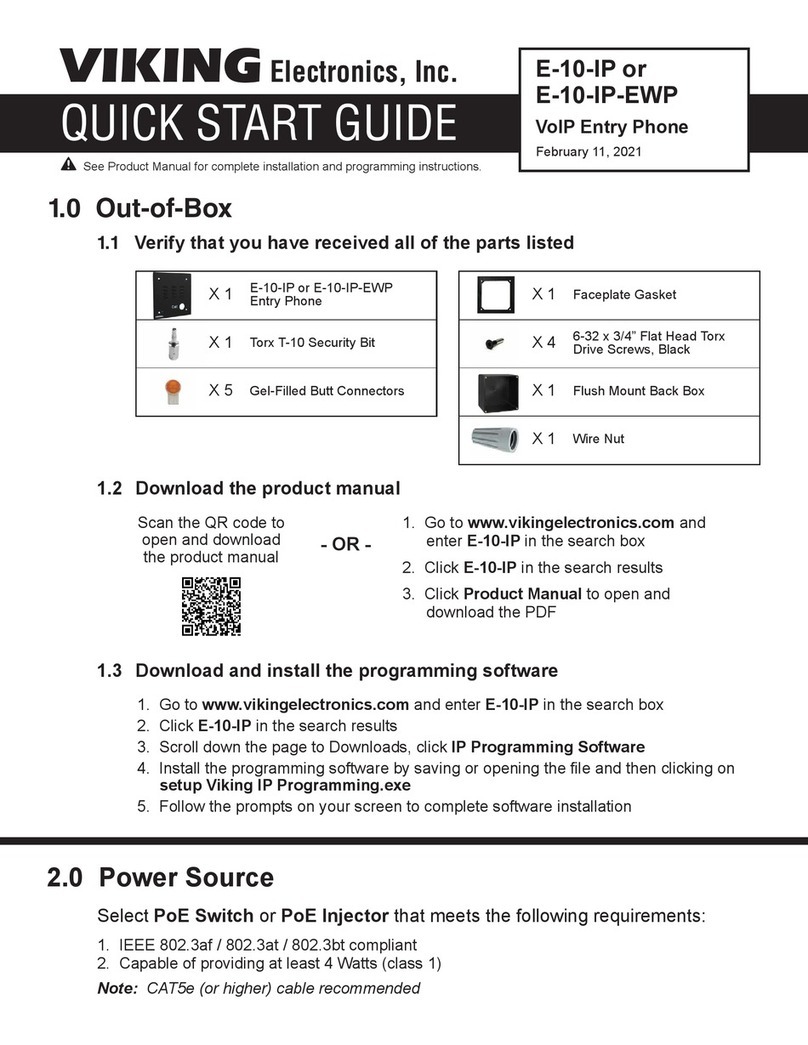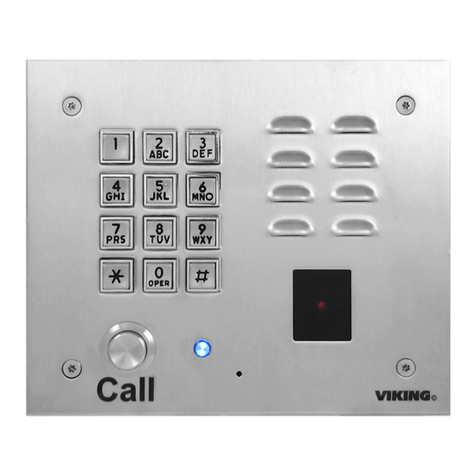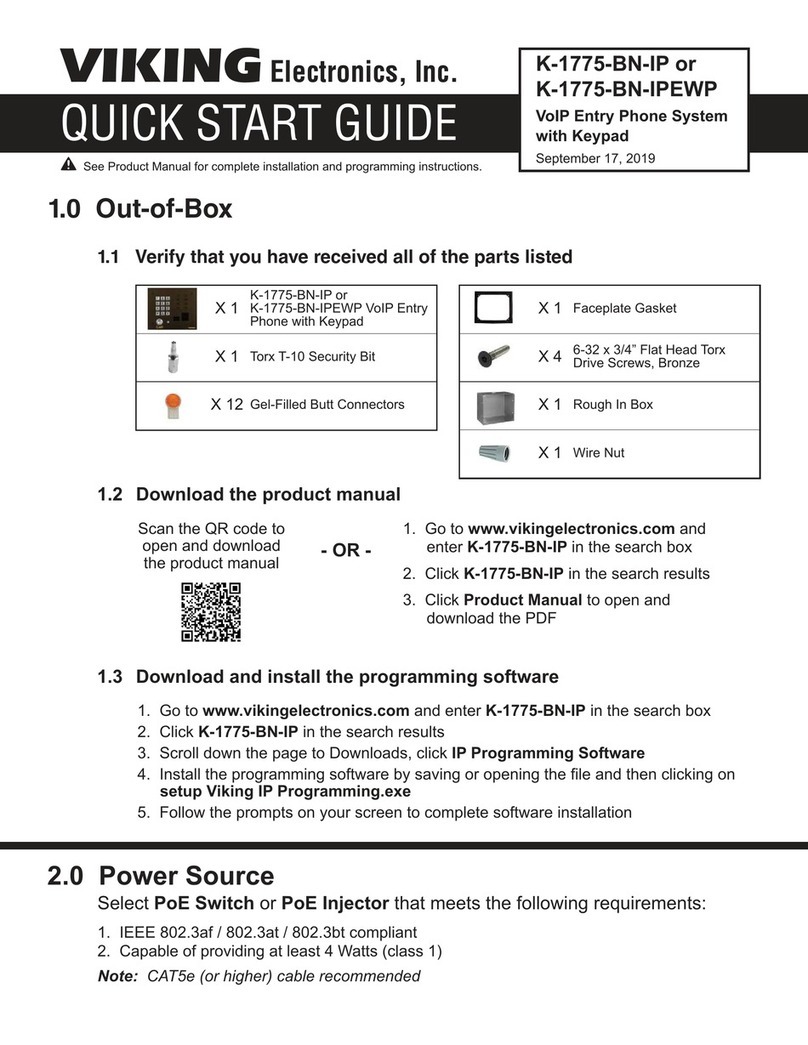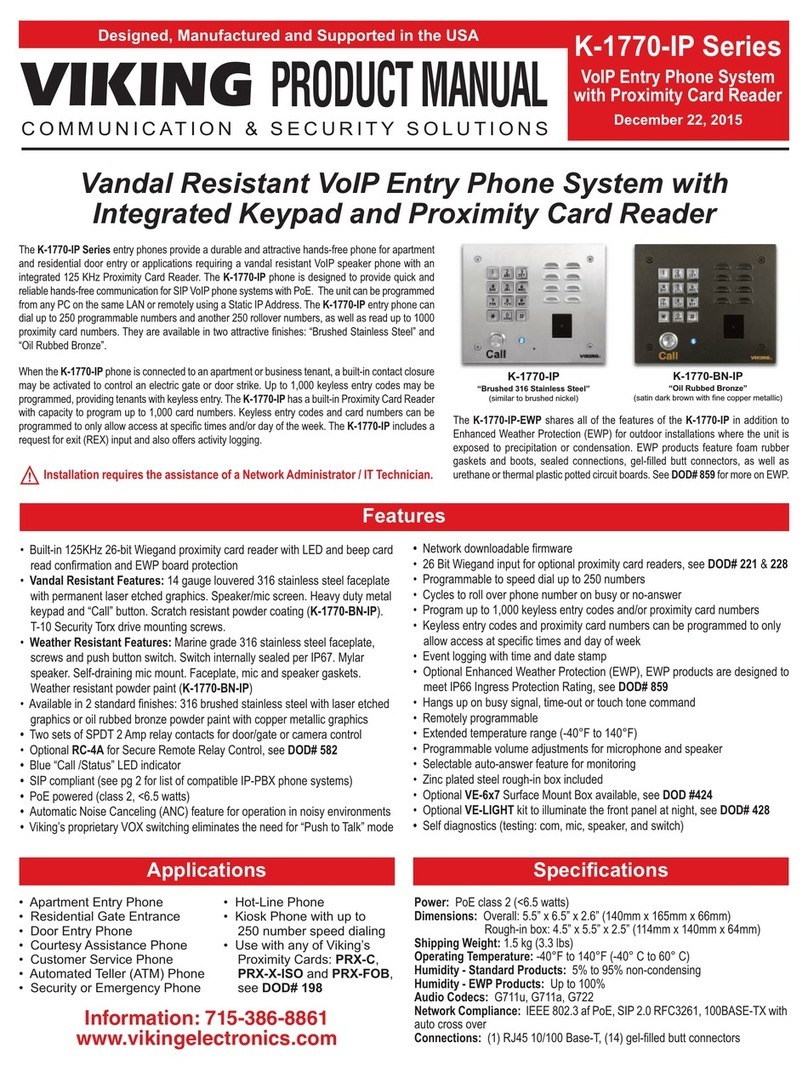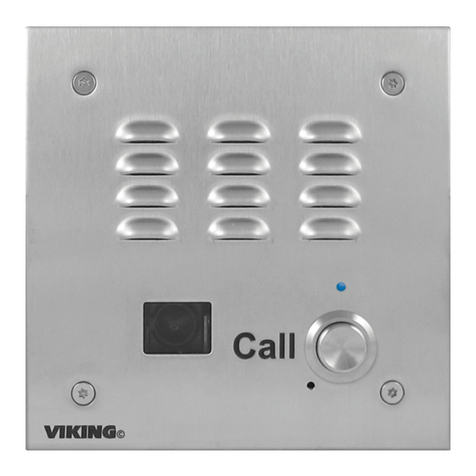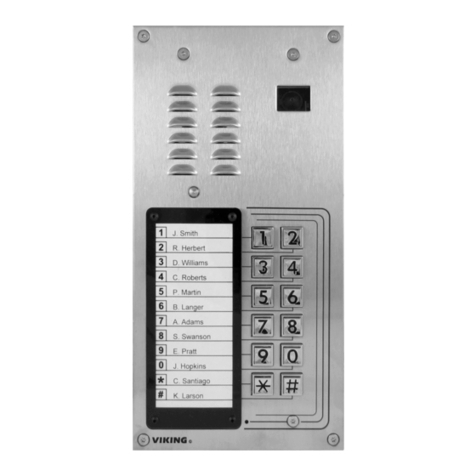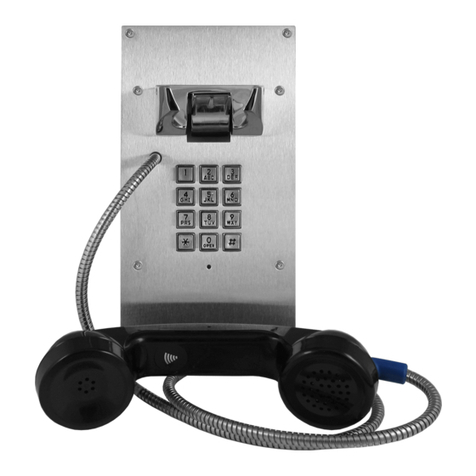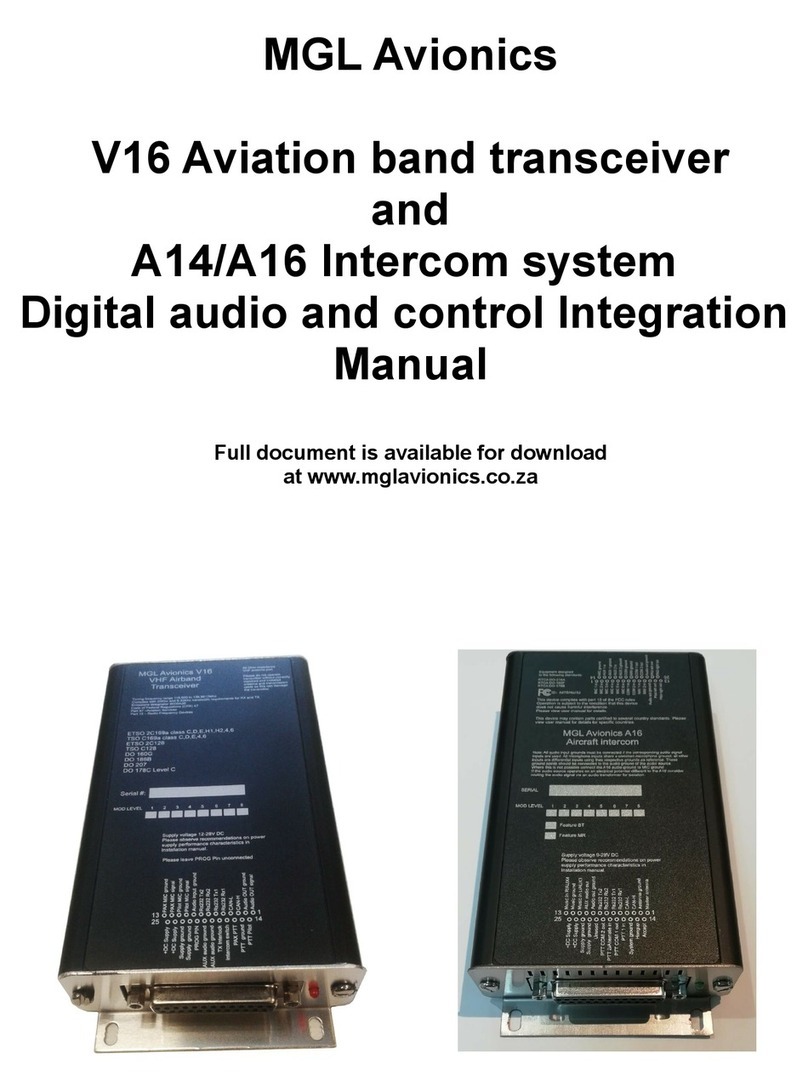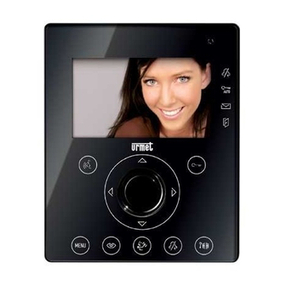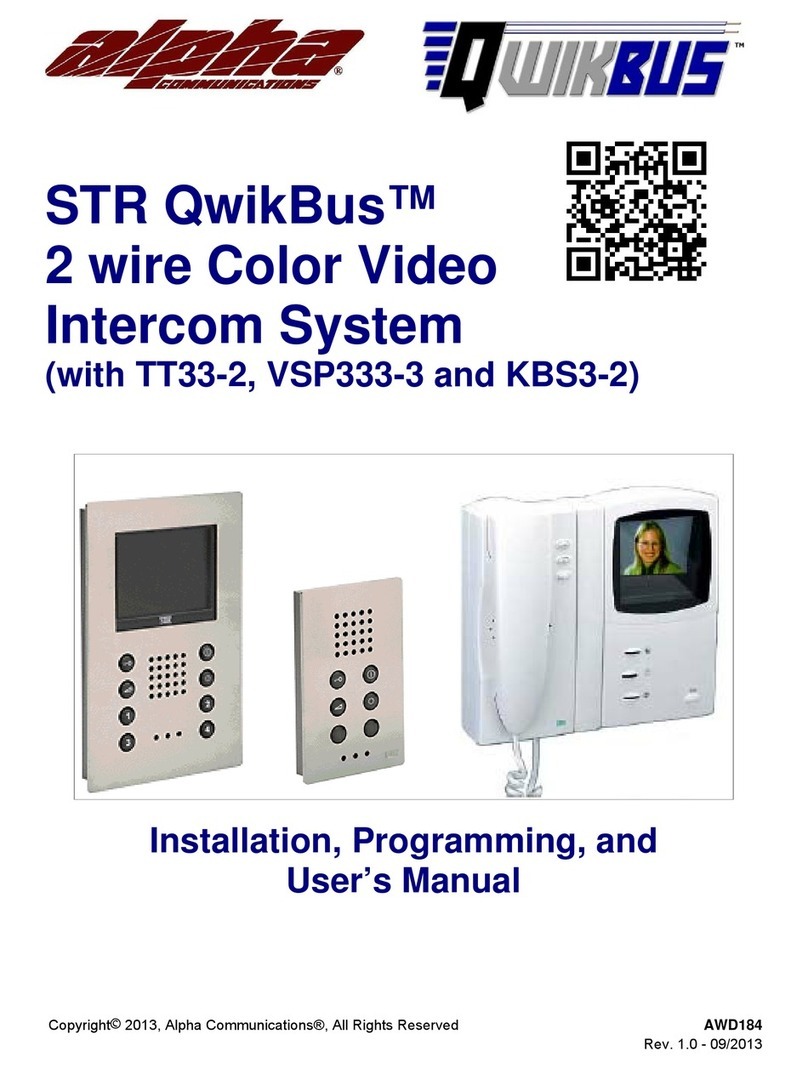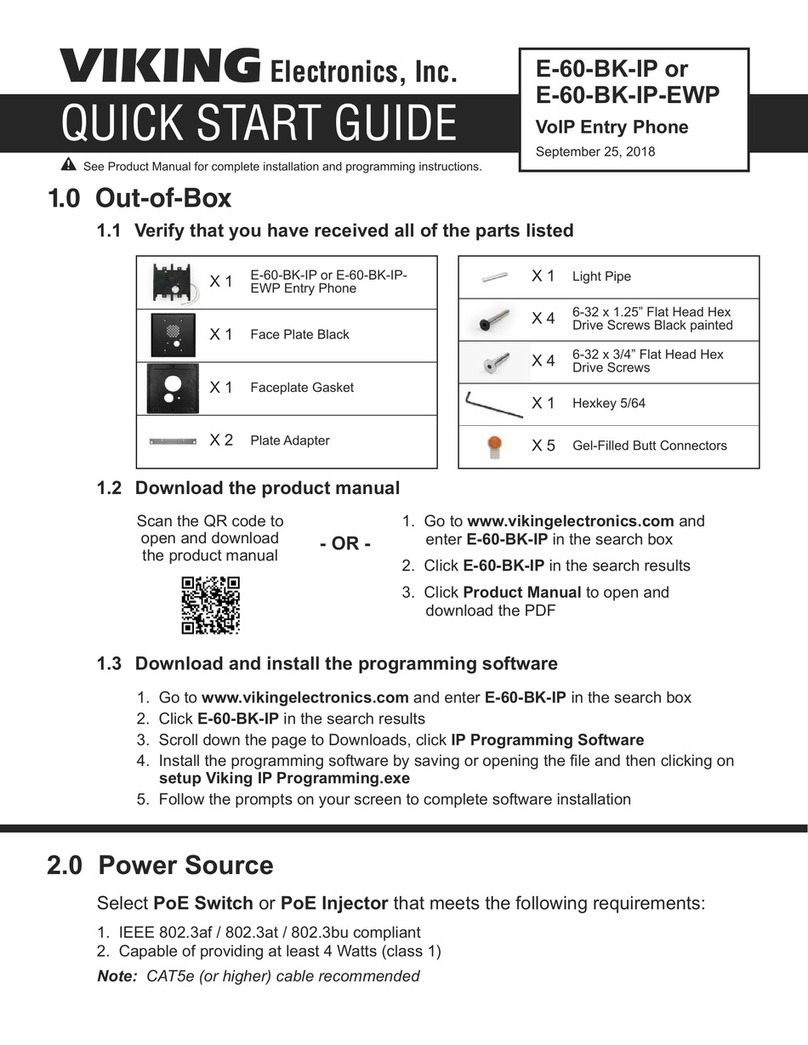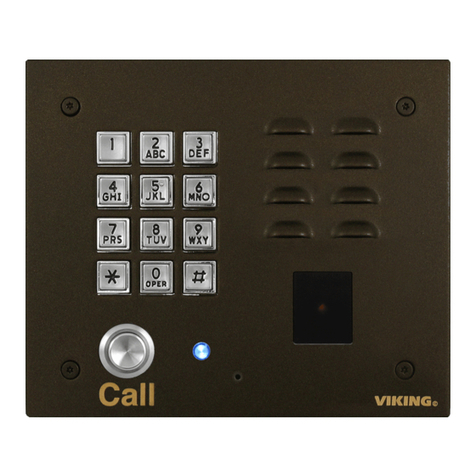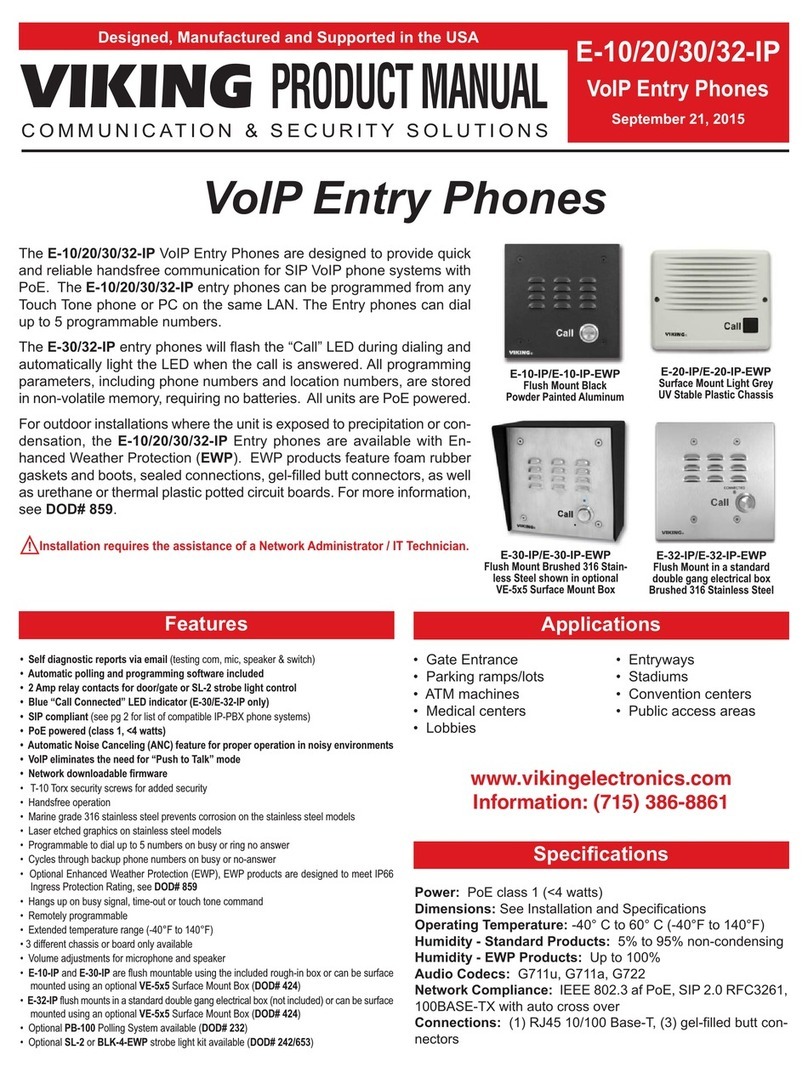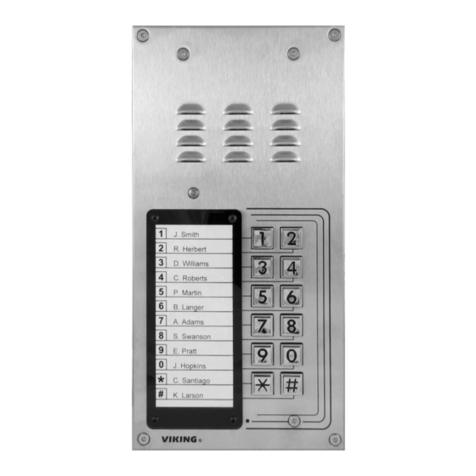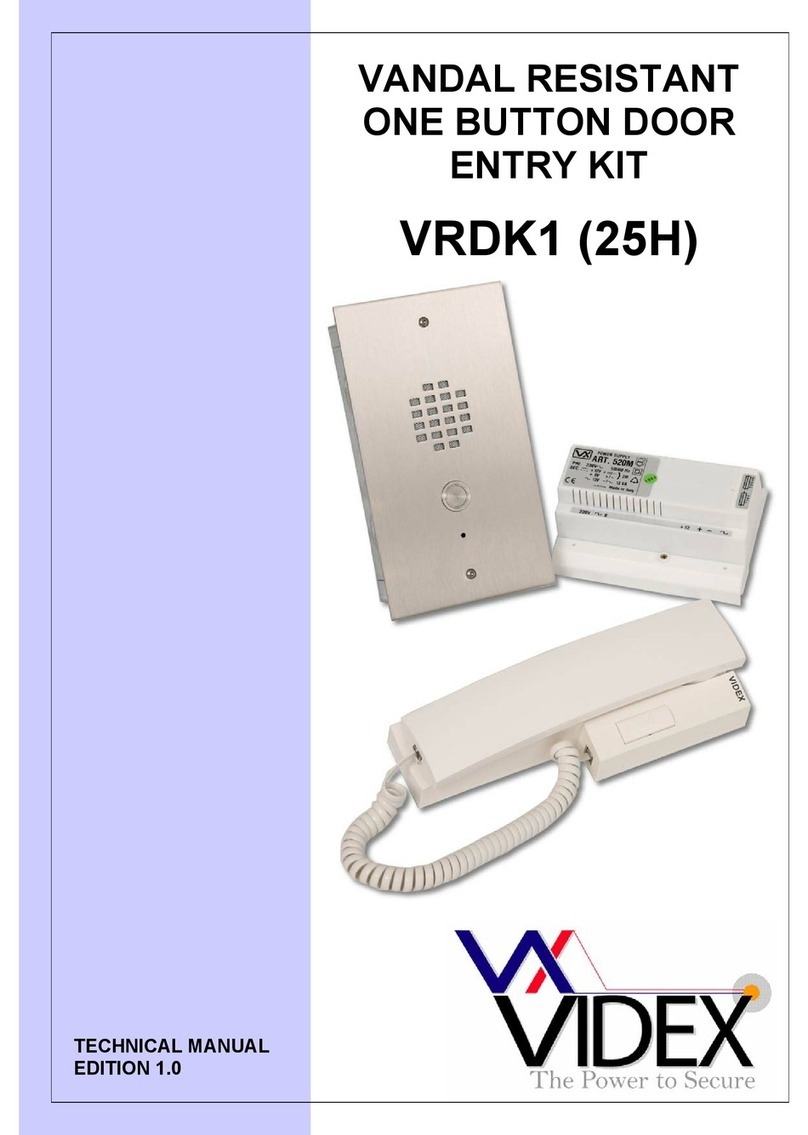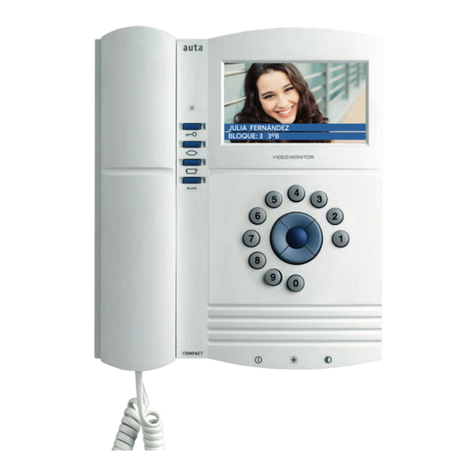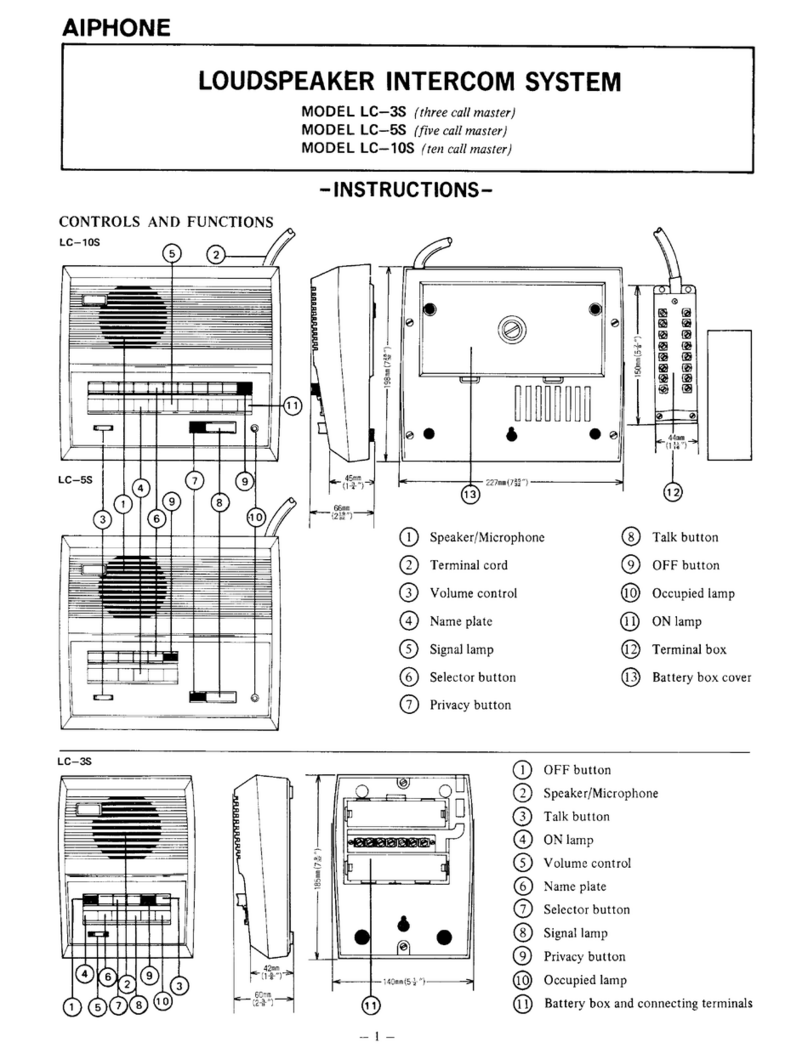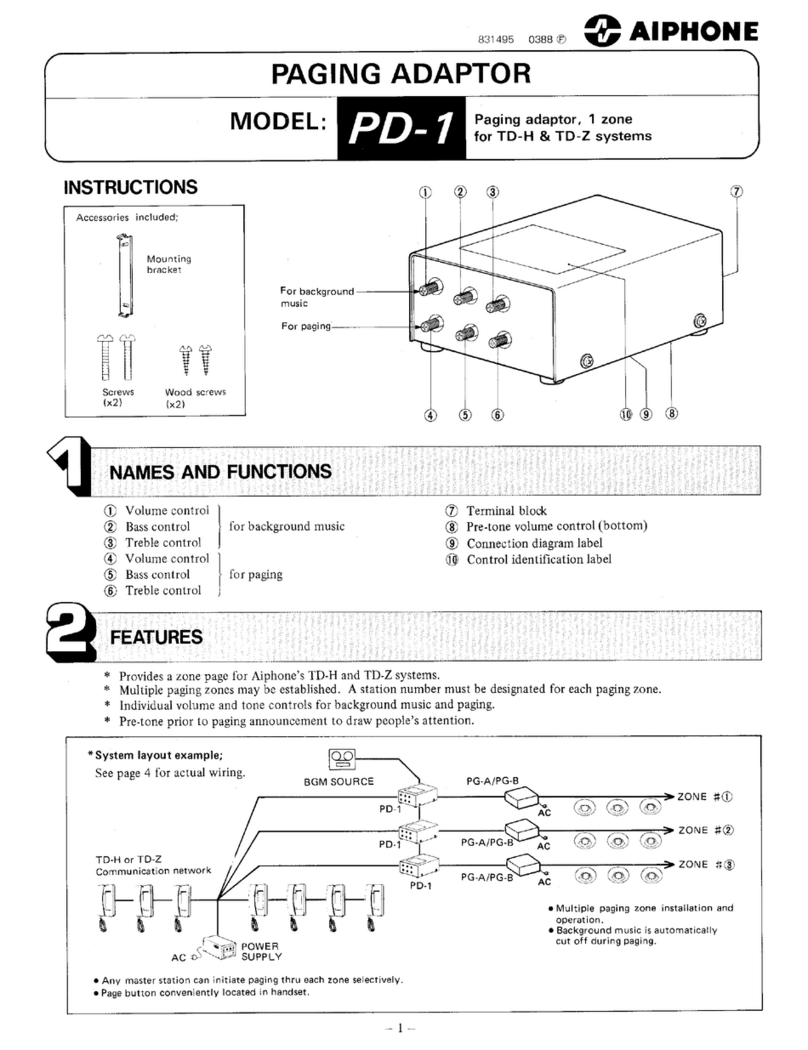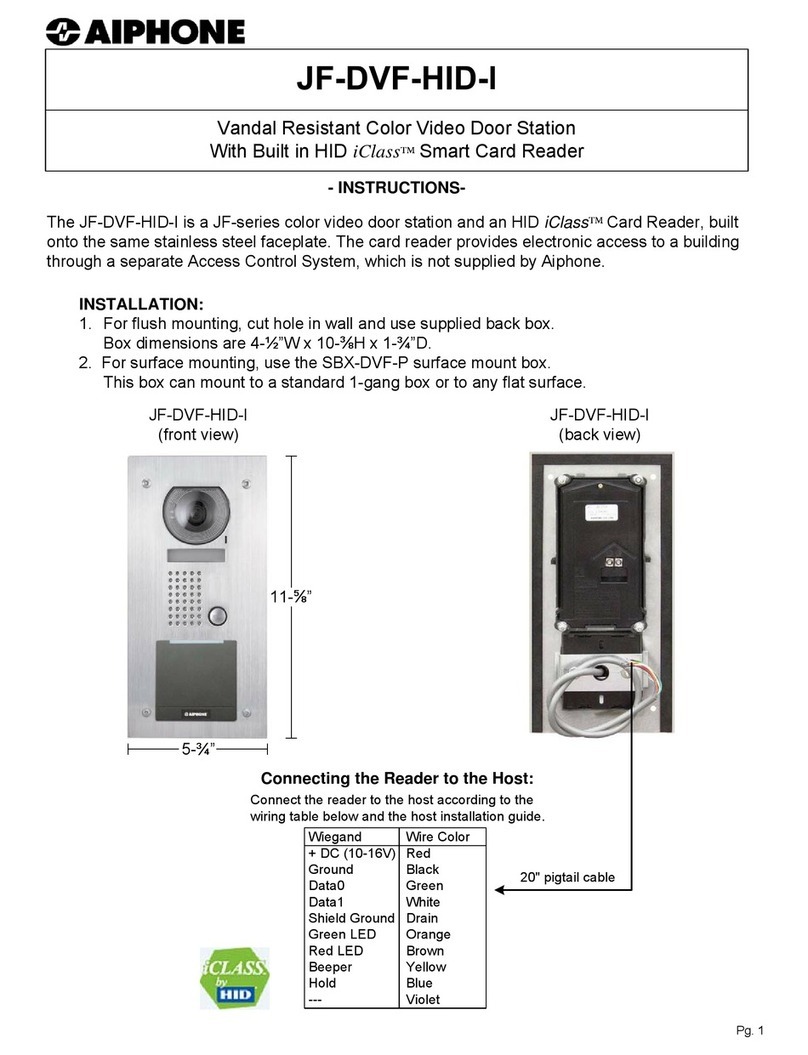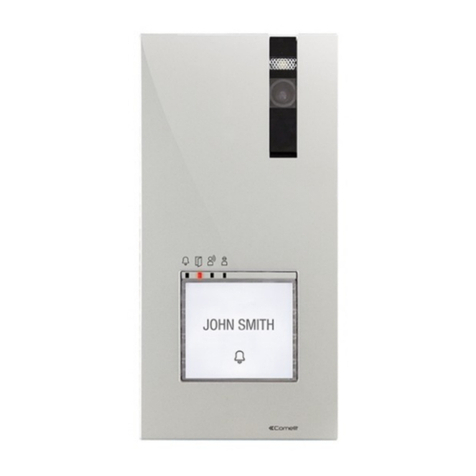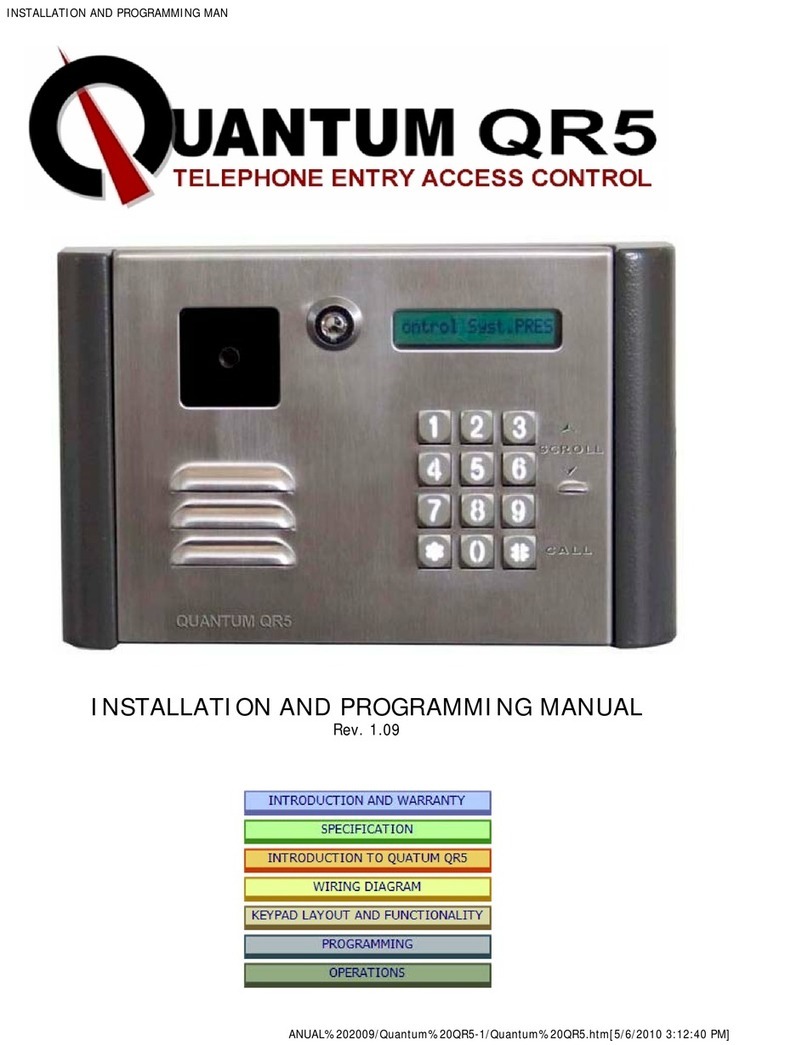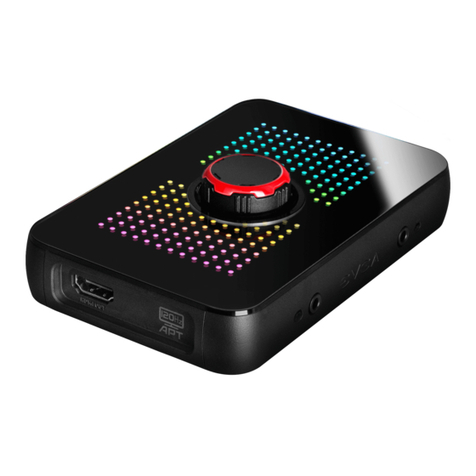PRODUCT MANUAL
Designed, Manufactured and Supported in the USA
COMMUNICATION & SECURITY SOLUTIONS
K-1775-IP Series
VoIP Entry Phone System
with Built-In Proximity Card
Reader and Color Camera
July 11, 2016
VIKING
Vandal Resistant VoIP Entry Phone System with Integrated
Proximity Card Reader and Analog Color Video Camera
Features
Applications Specifications
Information: 715-386-8861
www.vikingelectronics.com
• Built-in high resolution analog NTSC color video camera with wide viewing
angle, tilt/swivel adjustments and wide operating temperature: -40°F to 140°F
• Built-in 125KHz 26-bit Wiegand proximity card reader with LED and beep card
read confirmation and EWP board protection
• Vandal Resistant Features: 14 gauge louvered 316 stainless steel faceplate
with permanent laser etched graphics. Speaker/mic screen. Heavy duty metal
keypad and “Call” button. Scratch resistant powder coating (K-1775-BN-IP).
T-10 Security Torx drive mounting screws.
• Weather Resistant Features: Marine grade 316 stainless steel faceplate,
screws and push button switch. Switch internally sealed per IP67. Mylar
speaker. Self-draining mic mount. Faceplate, mic and speaker gaskets.
Weather resistant powder paint (K-1775-BN-IP)
• Available in 2 standard finishes: 316 brushed stainless steel with laser etched
graphics or oil rubbed bronze powder paint with copper metallic graphics
• Two sets of SPDT 2 Amp relay contacts for door/gate or camera control
• Optional RC-4A for Secure Remote Relay Control, see DOD# 582
• Blue “Call /Status” LED indicator
• SIP compliant (see pg 2 for list of compatible IP-PBX phone systems)
• PoE powered (class 2, <6.5 watts)
• Automatic Noise Canceling (ANC) feature for operation in noisy environments
Power: PoE class 2 (<6.5 watts)
Dimensions: Overall: 5.5” x 6.5” x 2.6” (140mm x 165mm x 66mm)
Rough-in box: 4.5” x 5.5” x 2.5” (114mm x 140mm x 64mm)
Shipping Weight: 1.5 kg (3.4 lbs)
Operating Temperature: -40°F to 140°F (-40° C to 60° C)
Humidity - Standard Products: 5% to 95% non-condensing
Humidity - EWP Products: Up to 100%
Audio Codecs: G711u, G711a, G722
Network Compliance: IEEE 802.3 af PoE, SIP 2.0 RFC3261, 100BASE-TX with
auto cross over
Connections: (1) RJ45 10/100 Base-T, (14) gel-filled butt connectors
Installation requires the assistance of a Network Administrator / IT Technician.
!
The K-1775-IP Series entry phones provide a durable and attractive hands-free phone for apartment
and residential door entry or applications requiring a vandal resistant VoIP speaker phone with an
integrated 125 KHz Proximity Card Reader and analog Color Video Camera. The K-1775-IP phone is
designed to provide quick and reliable hands-free communication for SIP VoIP phone systems with
PoE. The unit can be programmed from any PC on the same LAN or remotely using a Static IP
Address. The K-1775-IP entry phone can dial up to 250 programmable numbers and another 250
rollover numbers, read up to 1000 proximity card numbers and provide CCTV video of the entry area.
They are available in two attractive finishes: “Brushed Stainless Steel” and “Oil Rubbed Bronze”.
When the K-1775-IP phone is connected to an apartment or business tenant, a built-in contact closure
may be activated to control an electric gate or door strike. Up to 1,000 keyless entry codes may be
programmed, providing tenants with keyless entry. The K-1775-IP has a built-in Proximity Card Reader
with capacity to program up to 1,000 card numbers. Keyless entry codes and card numbers can be
programmed to only allow access at specific times and/or day of the week. The K-1775-IP includes a
request for exit (REX) input and also offers activity logging.
• Apartment Entry Phone
• Residential Gate Entrance
• Door Entry Phone
• Courtesy Assistance Phone
• Customer Service Phone
• Automated Teller (ATM) Phone
• Security or Emergency Phone
K-1775-IP
“Brushed 316 Stainless Steel”
(similar to brushed nickel)
The K-1775-IP-EWP shares all of the features of the K-1775-IP in addition to
Enhanced Weather Protection (EWP) for outdoor installations where the unit is
exposed to precipitation or condensation. EWP products feature foam rubber
gaskets and boots, sealed connections, gel-filled butt connectors, as well as
urethane or thermal plastic potted circuit boards. See DOD# 859 for more on EWP.
• Viking’s proprietary VOX switching eliminates the need for “Push to Talk” mode
• Network downloadable firmware
• 26 Bit Wiegand input for optional proximity card readers, see DOD# 221 & 228
• Programmable to speed dial up to 250 numbers
• Cycles to roll over phone number on busy or no-answer
• Program up to 1,000 keyless entry codes and/or proximity card numbers
• Keyless entry codes and proximity card numbers can be programmed to only
allow access at specific times and day of week
• Event logging with time and date stamp
• Optional Enhanced Weather Protection (EWP), EWP products are designed to
meet IP66 Ingress Protection Rating, see DOD# 859
• Hangs up on busy signal, time-out or touch tone command
• Remotely programmable
• Extended temperature range (-40°F to 140°F)
• Programmable volume adjustments for microphone and speaker
• Selectable auto-answer feature for monitoring
• Zinc plated steel rough-in box included
• Optional VE-6x7 Surface Mount Box available, see DOD #424
• Optional VE-LIGHT kit to illuminate the front panel at night, see DOD# 428
• Self diagnostics (testing: com, mic, speaker, and switch)
• Hot-Line Phone
• Kiosk Phone with up to
250 number speed dialing
• Use with any of Viking’s
Proximity Cards: PRX-C,
PRX-X-ISO and PRX-FOB,
see DOD# 198
K-1775-BN-IP
“Oil Rubbed Bronze”
(satin dark brown with fine copper metallic)
